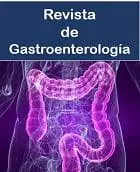*Capítulos del libro “CHAOS 2000 from Cos to Cosmos: making a new medicine for a new millenium”. Toronto: Vashna publications; 1996 (Reimpresión 2000).
Vivian S.Rambihar,M.D.Cardiologist,McMaster University,Hamilton, Canada.
Chaos is not new. It is as old as the mountains and the streams. It features in the creation myths of many cultures as the origin of everything. The Chaos has waxed and waned over history and prehistory, enshrined in the religion, culture and phlosophy of various civilizations. lt is now emerging again, this time as a science, sparked by the computer revolution of the late 1900 ´s, applicable to the physical, biological and social sciences, becoming the science of everything, and of the future.
Chaos is an abstract cosmic principle,referring to the source of all creation, according to Ralph Abraham in Chaos Gaia Eros. Chaos is a void, out of which everything arose in Greek mythology, recorded in the Theogony by esiod, one of the early Greek poets. Out of Chizaos arose Gaia, the created universe, and Eros, the creative impulse.
This same trinity, according to Abraham,preceded the creation of the gods and goddesses of the usual pantheon of early Greek paganism (also called Orphism), is also associated with three revolutionary movements in the sciences now, sharing a similar, mathematical basis.
He described the Chaos revolution named in 1975 by Jim York and T.Y. Li,for mathematics for intrinsically irregular processes.
The Gaia Hypothesis, named in 1973, proposes a self-regulatory capability of the complex system of earth, ocean, atmosphere, and the living ecosystems of our planet. The earth is viewed as a living system, with the biosphere creating and maintaining favorable conditions for life. Erodynamics, named in 1989, he says, applies dynamical systems theory (chaos) to human social phenomena.
These three principles converge now at the end of this second millennium AD:
To herald the beginning of a new era, a Chaos Epoch. Abraham contends that history and prehistory over the past 25,000 years falls naturally into three phases, or epochs, associated with the Orphic trinity: Chaos, Gaia and Eros.He describes a metahistory of these three phases punctuated by revivals of chaos; a static or Gaia phase, 10,000 – 4,000 BC, a Periodic or Eros phase, 4,000 BC -1962 AD, and a chaotic phase, after 1962.
The names static,periodic and chaotic used to describe these epochs, represent also a development in mathematics, Chaos Theory -or a more advanced form- Complexity theory. The point or static attractor developed in 1665 from Newton to describe nearby points dynamicaily attracted, leading to ordinary differential equations. In 1850, the term periodic attractor came into general use to describe oscillation. The term chaotic attractor described by Poincaré in 1899, came into more general use in the 1960’s.
The Chaotic Age began with the computer generation of its principles, by Yoshisuke Ueda in 1961, and Edward Lorenz in 1963. It has now emerged widespread with applications to almost everything.
The concept of chaos developed over the ages not only in creation myths:
But in various revivals. Abraham suggests some of these revivals in ancient times, associated with Opheus (1,200 BC), Pythagoras (600 BC), Buddha (500 BC), Heraclitus (500 BC), Christ (AD 37), and Hypathia (AD 415).
Abraham suggests further that the suppressed system of chaos, creativity and partnership perennially seek to reemerge into the collective conscious, and into the mainstream of world culture.
There is now a wave of increasing application of chaos or complexity theory, or dynamical systems theory to the sciences, the physical, biological and the social sciences.
History can now be seen as dynamic, punctuated chaotically by bifurcations or sudden shifts.
Climate is seen as chaotic in fractals of time and space, with the Ice Ages postulated as demonstrating chaotic periodicity.
The development of the world, its culture and its diversity is seen as emergent -self organizing and dynamical. Evolution is now being considered as both spontaneous order and natural selection. Even the potential of the human mind to think and contemplate, and the existence of consciousness. are being viewed as possibly related to chaos.
The chaos revolution has arrived. The chaos revival is here and the Chaos Epoch has dawned. It is only by understanding our past that we can prepare for the future. How well we handle the future depends on the models we use for the past. It seems that we are attracted to a future of chaos.
With this, chaos will come an appreciation of the rich, vibrant, diverse, uncertain splendor of nature. It will reawaken awe and respect in the mysteries of the universe.Stuart Kauffman in his book At Home in the Universe, The Search for Laws of Self-Organization and Complexity, writes of a meeting with Scott Momaday, a Pulitzer Prize winning Native American author, seeking to identify the fundamental issues facing humanity. Momaday says, “We must reinvent the sacred in the modern world”. Kauffman responds, “I hold the hope that what some are calling the new sciences of complexity may help us find a new place in the universe, that through this new science, we may recover our sense of worth, our sense af the sacred”.






